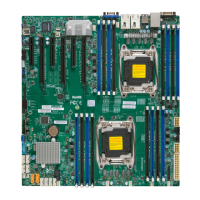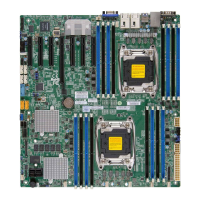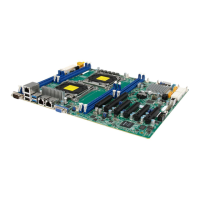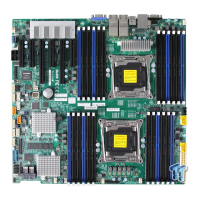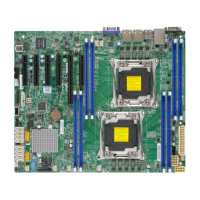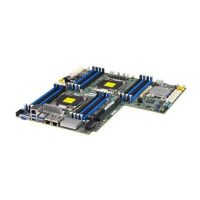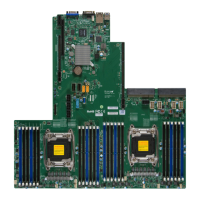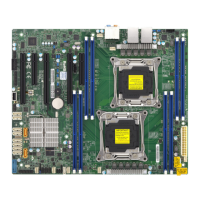Do you have a question about the Supermicro X10DRS-2U and is the answer not in the manual?
Details the Super X10DRS-2U/3U/4U motherboard's capabilities and intended use for storage platforms.
Outlines the structure of the manual, detailing the content of each chapter and appendix.
Details the key specifications of the motherboard, including CPU, memory, chipset, and expansion slots.
Explains the Intel E5-2600v3 processors and Intel C612 PCH capabilities for storage server platforms.
Describes the motherboard's system health monitoring features, including voltage and fan status.
Emphasizes the importance of a stable power source and outlines connection requirements for the motherboard.
Details advanced power management features like Intel Intelligent Power Node Manager and Management Engine.
Provides industry-standard warnings for user safety during installation and handling.
Explains precautions to protect components from electrostatic discharge (ESD) during handling.
Guides users through the physical installation process of the motherboard into a chassis.
Details the procedures for installing the CPU and CPU heatsink onto the motherboard socket.
Provides instructions on how to properly install and remove DIMM memory modules.
Explains the function and configuration of various jumpers on the motherboard for system modification.
Offers step-by-step procedures to diagnose and resolve common system issues.
Provides steps to diagnose and fix issues where the system displays no video output.
Guides users through diagnosing and resolving problems preventing the system from booting.
Details how to troubleshoot issues related to memory detection and installation errors.
Offers advice for diagnosing instability issues occurring during or after OS installation.
Outlines the steps to take before contacting technical support for assistance.
Describes the initial BIOS setup screen, including system date, time, and BIOS version information.
Details various advanced BIOS settings for system configuration and optimization.
Explains BIOS settings related to power management, including watch dog timers and power button functions.
Provides information on CPU settings, including frequency, cache, and core enabling within the BIOS.
Details BIOS settings for optimizing power efficiency and performance tuning.
Covers BIOS settings for memory controller configuration, frequency, and error correction.
Explains how to configure Intelligent Platform Management Interface (IPMI) settings and event logs.
Details BIOS settings for system security, including passwords, secure boot, and key management.
Covers BIOS configurations for system boot order, modes, and device priorities.
Describes options for saving BIOS changes, restoring defaults, and exiting the setup utility.
Lists and explains BIOS POST error codes communicated through audible beeps.
Guides users on installing drivers and utilities from Supermicro's website or ISO image.
Details the installation and functionality of SuperDoctor 5 for system health monitoring.
Explains how to log into the BMC using the default password and change credentials.
Explains the structure of UEFI BIOS flash chips and the recovery process.
Provides steps to recover the main BIOS block using a USB flash drive or CD/DVD.
| CPU Socket | Dual LGA 2011-3 |
|---|---|
| Chipset | Intel C612 |
| Memory Type | DDR4 |
| Maximum Memory | 512 GB |
| PCIe 3.0 x8 Slots | 2 |
| PCIe 2.0 x4 Slots | 1 |
| Video Output | VGA |
| SATA Ports | 6Gbps |
| SAS Ports | 8 |
| RAID Support | 0, 1, 5, 10 |
